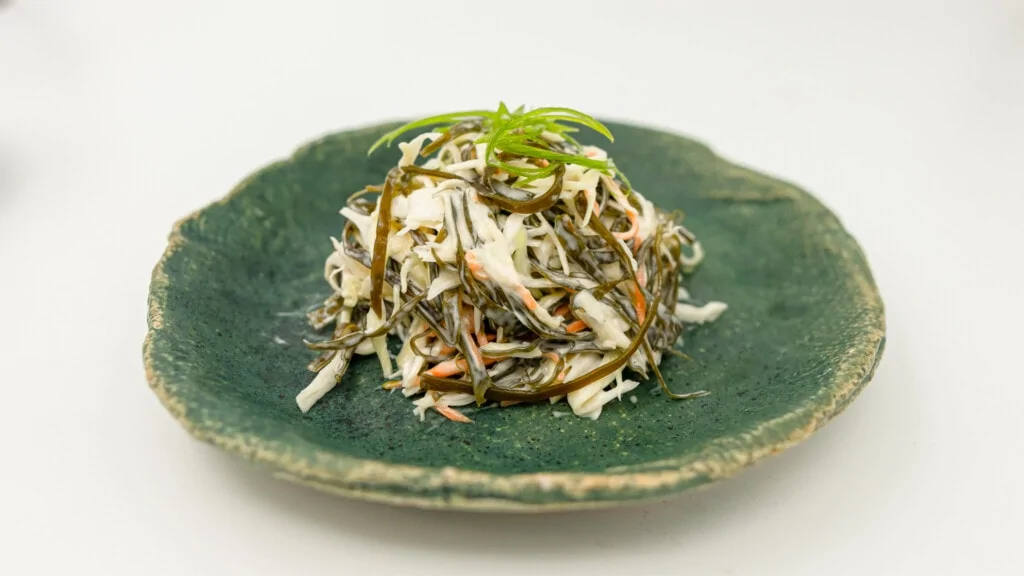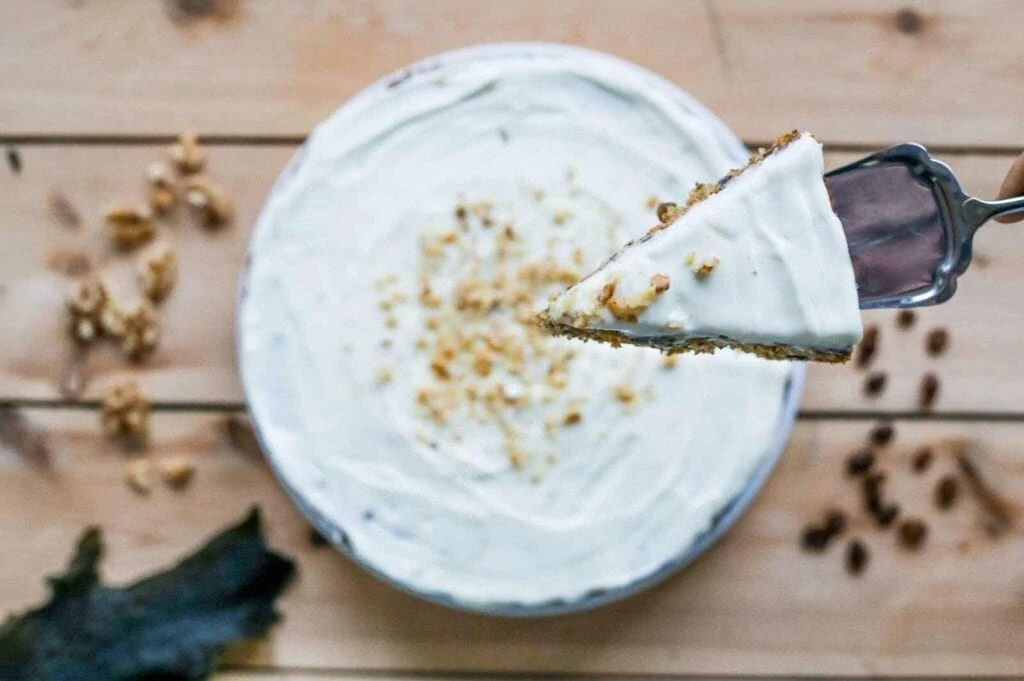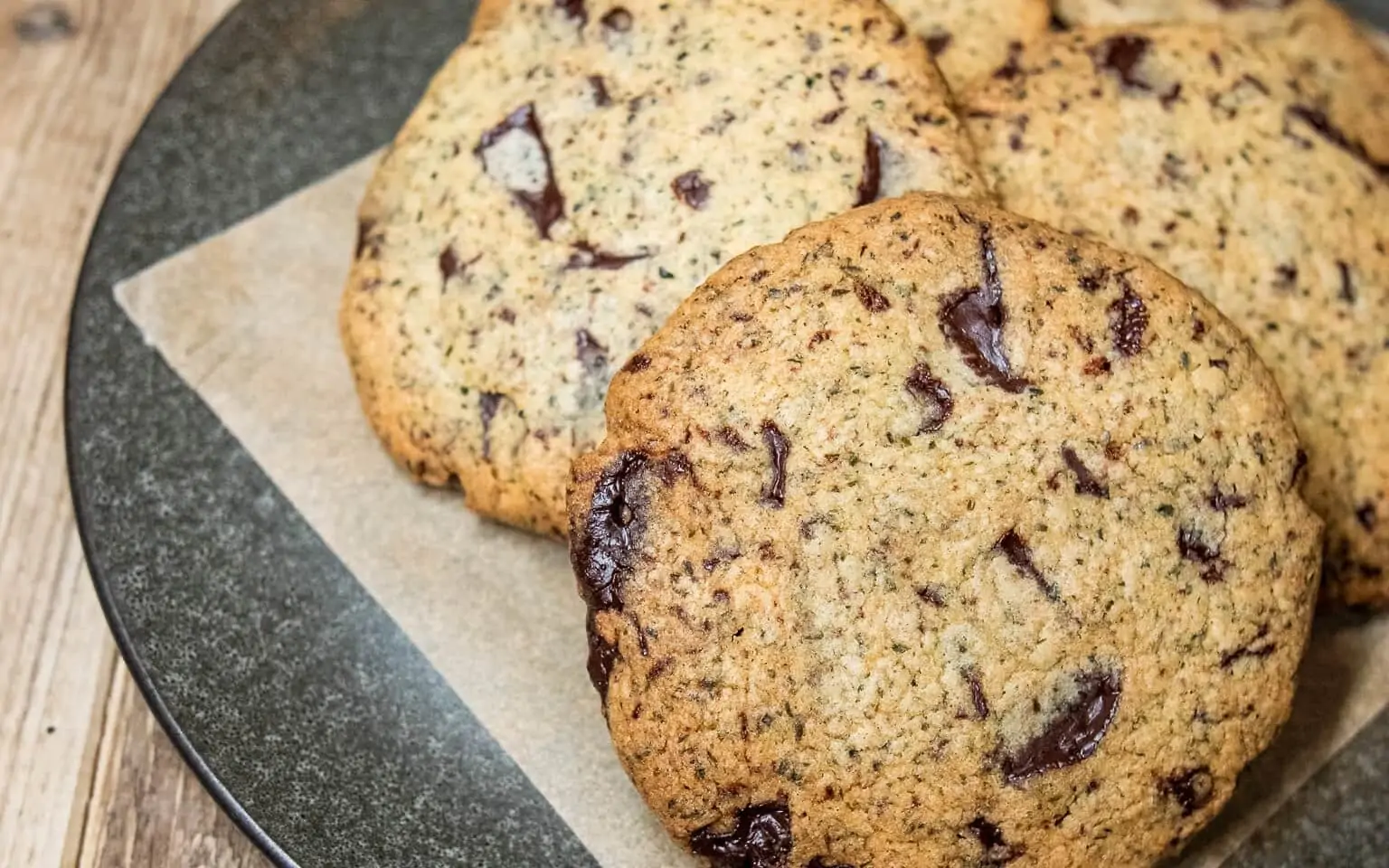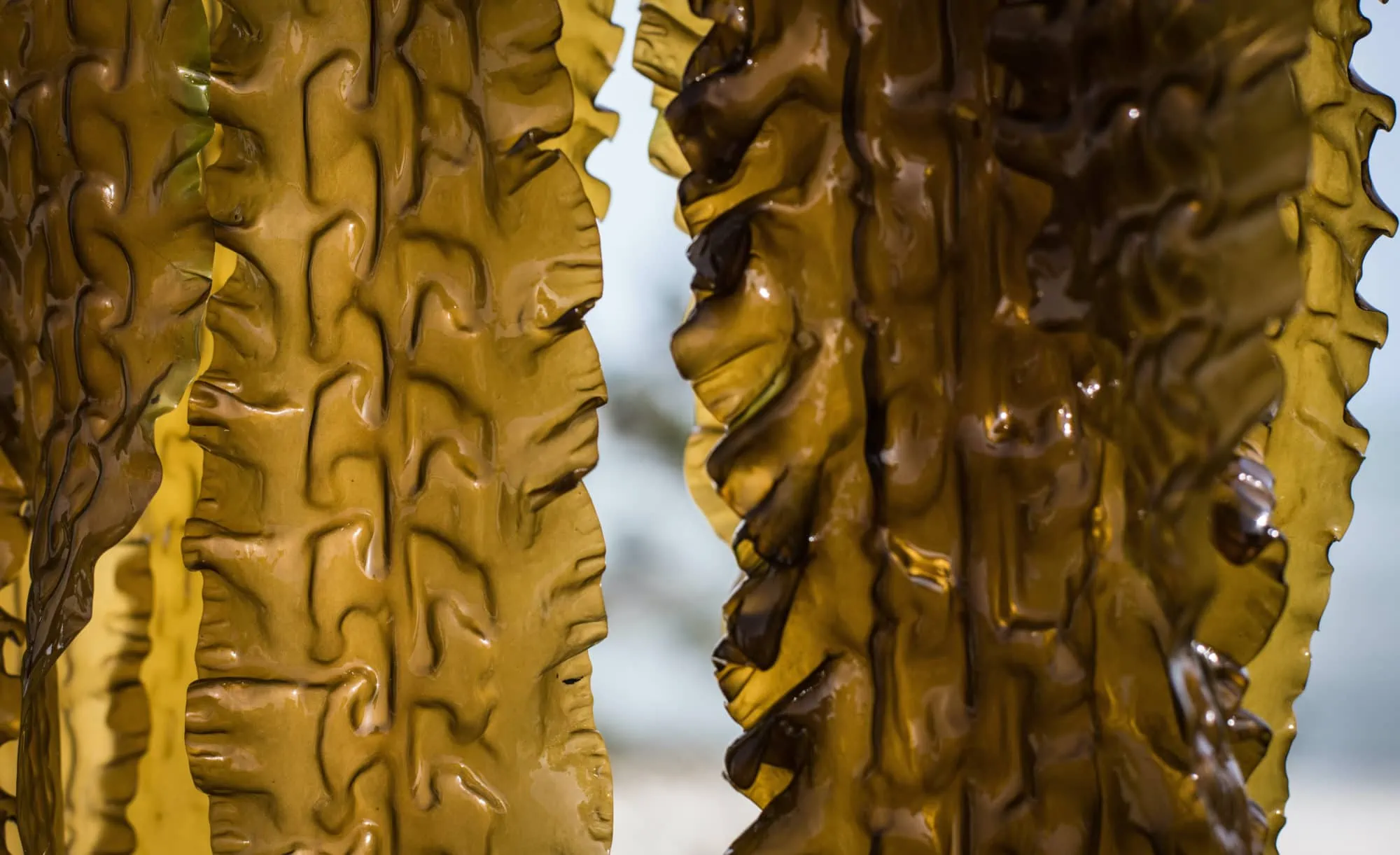
Sugar kelp
Saccharina latissima
Other names: Sweet Kombu, Devil’s Apron, Neptune’s Belt, Sukkertare
Sugar kelp has easily recognisable rippled edges and an alligator-like texture. A type of brown algae, sugar kelp is thick, golden and has fronds that rapidly grows up to four metres in length. Sugar kelp favours colder water, and is so named because of the high concentration of the natural sugar mannitol. When the fronds of kelp are dried, the mannitol crystallises into a visible white powder on the surface. Not to be mistaken for white mould – this is a sign of high quality kelp.
Kombu (or sweet kombu) is one of the most commonly-used types of seaweed in Japanese and Chinese home cooking. It is widely cultivated and consumed in that part of the world, and is fast becoming a popular addition to Western kitchens. It’s a fantastic natural source of nutrients, it’s rich in umami flavour, it’s relatively inexpensive and it’s easy to store, with a shelf life of around a year once opened.
Sugar kelp grows quickly during the winter and spring seasons, with growth rates on record of between 1cm and 4cm per day. The rate of growth slows and can even stop during summer, and this seasonal growing pattern leaves indentations on the fronds which can be used to age the plant. Like nori, sugar kelp is widely farmed, and grows off ropes that are suspended in the ocean. The fronds of sugar kelp are able to regrow after being trimmed, which means that kelp farmers can collect multiple harvests each year from the same seedling, making sugar kelp a commercially attractive crop.
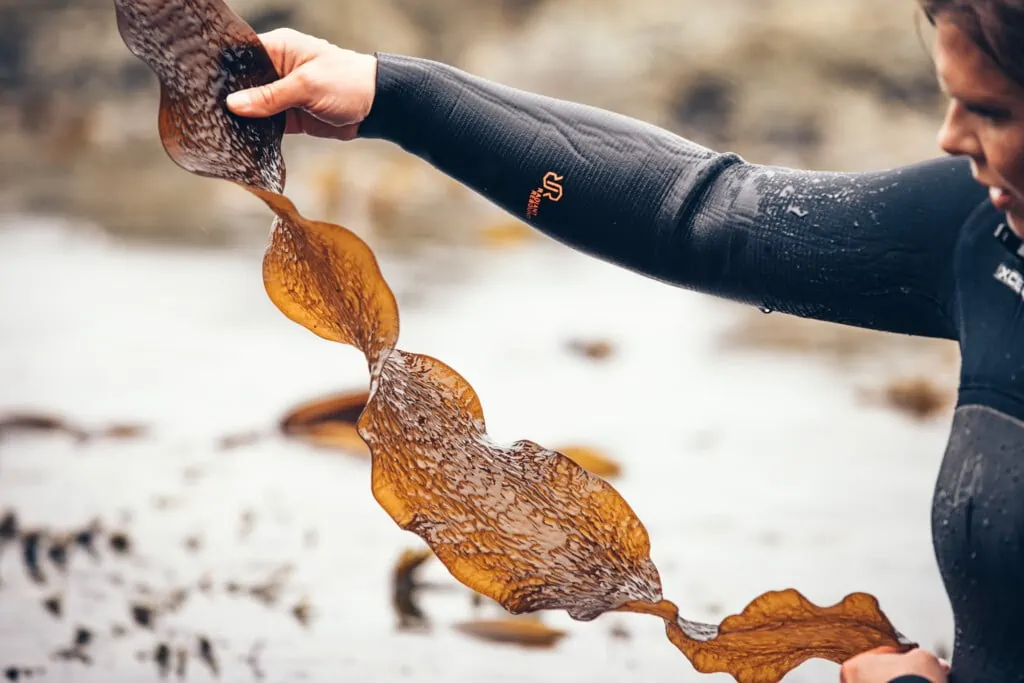
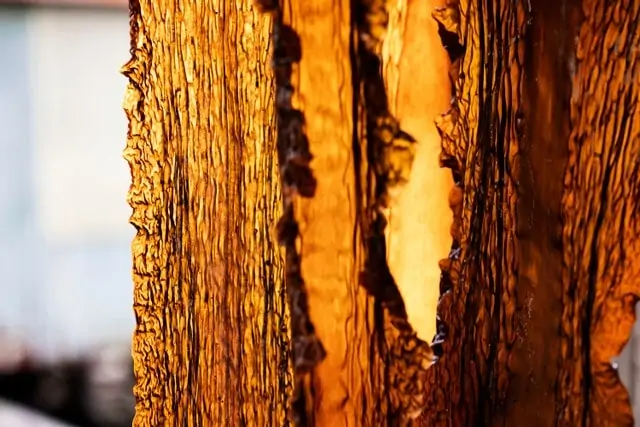
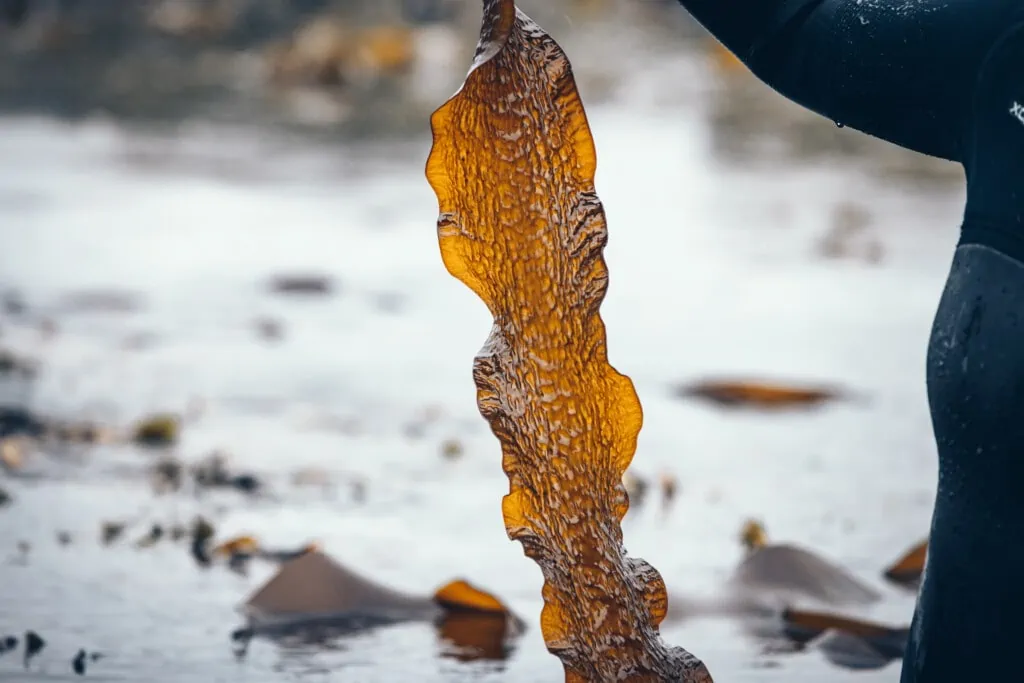
Like oarweed, sugar kelp is naturally high in iodine, with a hearty, mineral flavour. The balance of salt and sweet flavours make this a great addition to stocks and slow cooked meats – adding just one piece to your pot will infuse it with flavour and nutrition.
Sugar kelp’s thick, broad fronds are great for wrapping and steaming meat and fish. Before using it in this way, we recommend soaking the kelp overnight in cold water. This reduces the ‘sliminess’ caused by the mannitol’s reaction with water, and makes a more pleasant texture. After you’ve soaked, carefully rinse the kelp, then either finely slice it to use as a crunchy ocean vegetable, or simmer for approximately 15 minutes in hot water for a softer, leafier result.
Blanching kelp for 30 seconds can reduce the iodine content by up to 90%.
Nutritional profile:
- Vitamin A (important for vision and growth)
- Nickel (promotes hormonal activity and stimulates metabolism)
- Zinc (for building protein and healing damaged tissue)
- Copper (helps to create and maintain connective tissues and blood vessels)
- Vitamin K (helps with blood clotting and the building of healthy bone tissue)
- Magnesium (supports muscle and nerve function and energy production)
- Potassium (necessary for proper cell hydration)
- Calcium (for healthy bones and teeth)
- Protein (for cell repair and regeneration)
- Folate (helps the body create healthy red blood cells)
- Iodine (essential for healthy brain and thyroid function)

The exact nutritional content of seaweed depends on the season in which it was harvested, as well as its location. Seaweed is highly effective at absorbing trace minerals from its surroundings, which is why it’s important to source your edible seaweed from places where you know the water quality to be high. You can read more about where we harvest our seaweed here.
Recipes featuring sugar kelp:
Sweet kombu lends itself to desserts, which is why we love these recipes for carrot cake and chocolate chip cookies, both featuring sugar kelp. The firm, crunchy leaf also goes great with coleslaw, as a side dish for your picnics and BBQs.
